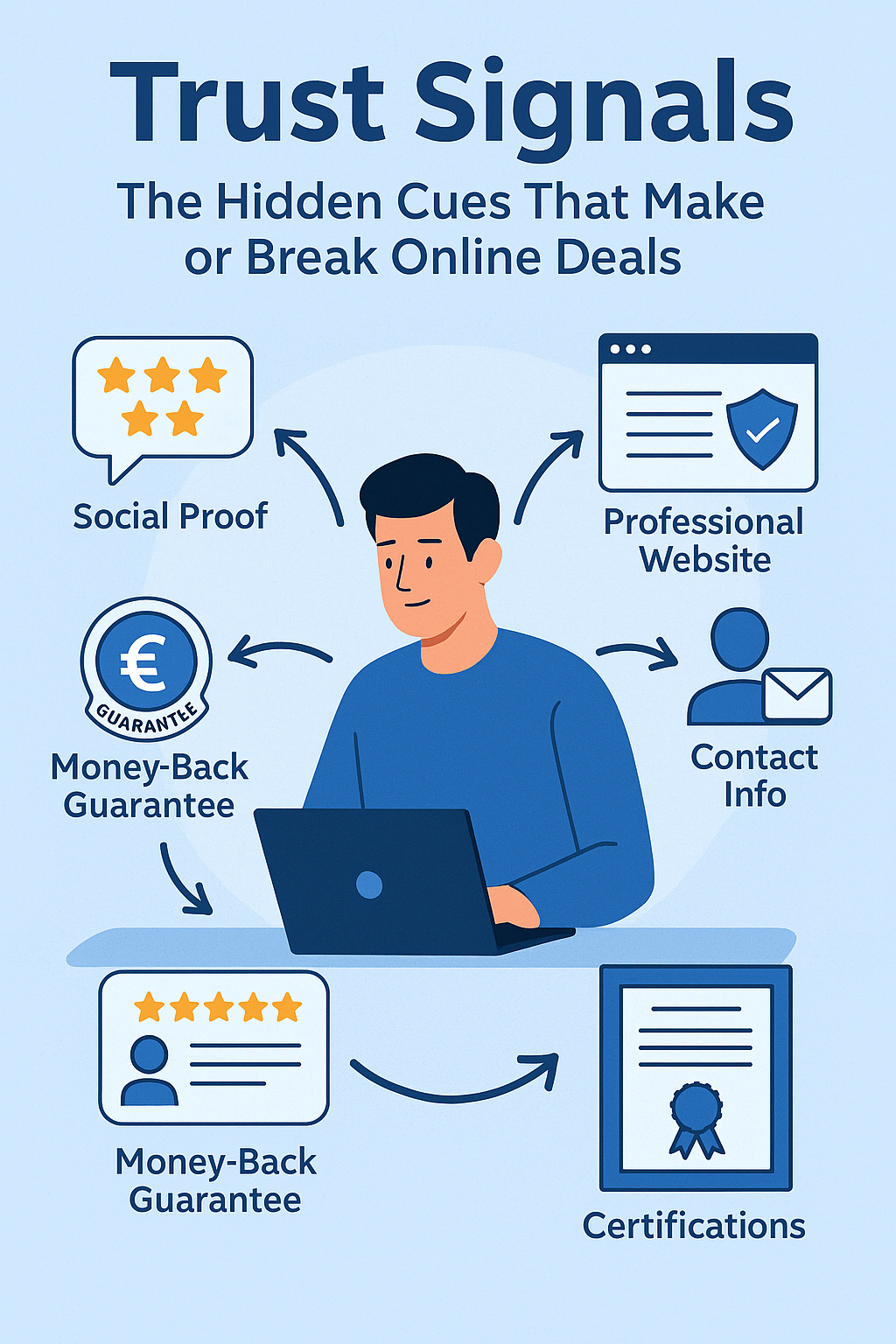
Trust Signals: The Hidden Cues That Make or Break Online Deals
Published: July 2025
When it comes to doing business online, trust is everything. Customers can’t meet you in person, shake your hand or see your physical shop. Instead, they rely on a combination of subtle cues—called trust signals—to decide whether you’re credible and worth their time and money.
These hidden cues influence every click, enquiry and purchase. In this guide, we’ll explore what trust signals are, why they matter, and how you can use them to build confidence and close more deals.
Why Trust Signals Matter
According to research by the UK’s Chartered Institute of Marketing, 81% of consumers say that trust influences their purchasing decisions. Without trust, even the most compelling offer falls flat. Conversely, strong trust signals can overcome price objections and convert sceptical visitors into loyal customers.
Trust signals are especially important in crowded markets where consumers have many options. If your website lacks them, people are likely to leave and choose a competitor who looks more credible.
The Different Types of Trust Signals
There are two main categories of trust signals:
- On-site trust signals – Elements on your website or profile that reassure visitors.
- Off-site trust signals – External validation that supports your credibility.
On-site Trust Signals
1. Professional Design and Clear Branding
A polished website design immediately communicates professionalism. Poor design, inconsistent branding and outdated visuals suggest carelessness, even if your services are excellent.
Tip: Invest in a clean, modern layout with consistent colours, fonts and logos.
2. Contact Information
Transparency builds trust. Always display clear contact details, including a phone number, email and physical address if applicable. Visitors feel more comfortable knowing you can be reached.
3. SSL Certificates
A secure site (https) is no longer optional. Seeing a padlock icon in the browser reassures customers that their data is protected.
4. Guarantees and Return Policies
Money-back guarantees or clear return policies remove risk for the buyer. Even if customers never use them, knowing they exist can be enough to tip a purchasing decision in your favour.
5. Customer Testimonials and Reviews
Social proof is powerful. Positive testimonials and reviews demonstrate that real people trust you. Display them prominently on key pages.
Off-site Trust Signals
1. Reviews on Third-Party Platforms
Reviews on Google, Trustpilot or industry directories carry more weight than those on your own site. Encourage customers to leave reviews on these platforms.
2. Media Mentions and Awards
If you’ve been featured in the press or recognised by reputable organisations, showcase logos and quotes. Third-party endorsements strengthen your credibility.
3. Social Media Activity
Active, professional social media profiles show that your business is legitimate and engaged with its audience.
4. Backlinks from Trusted Sites
Links to your site from respected publications signal authority to both search engines and visitors.
How to Strengthen Your Trust Signals
Here are practical steps you can take to boost trust:
- Review your website as a customer would. Is it modern, easy to navigate and free of errors?
- Collect and display testimonials from satisfied clients.
- Ensure all pages load securely over https.
- Create a clear, detailed contact page with multiple ways to reach you.
- Showcase any certifications, awards or memberships.
- Link to positive media mentions or case studies.
Case Study: The Power of Trust Signals
A boutique travel agency in London struggled to convert website visitors. After adding verified Trustpilot reviews, a money-back guarantee badge and clearer contact information, conversions increased by 40% within three months. The only change was stronger trust signals.
Common Mistakes to Avoid
- Fake Reviews: These damage credibility when discovered.
- Outdated Content: Old blog posts or news articles suggest inactivity.
- Inconsistent Branding: Mismatched logos and colours create confusion.
- No Social Proof: Even a handful of testimonials is better than none.
Key Takeaways
Trust signals are the hidden language of credibility online. By understanding and implementing them thoughtfully, you can reassure visitors, improve conversions and build a brand that customers feel confident buying from.
📣 Ready to improve your trust signals and grow your business?
Contact us for a free digital reputation assessment today.